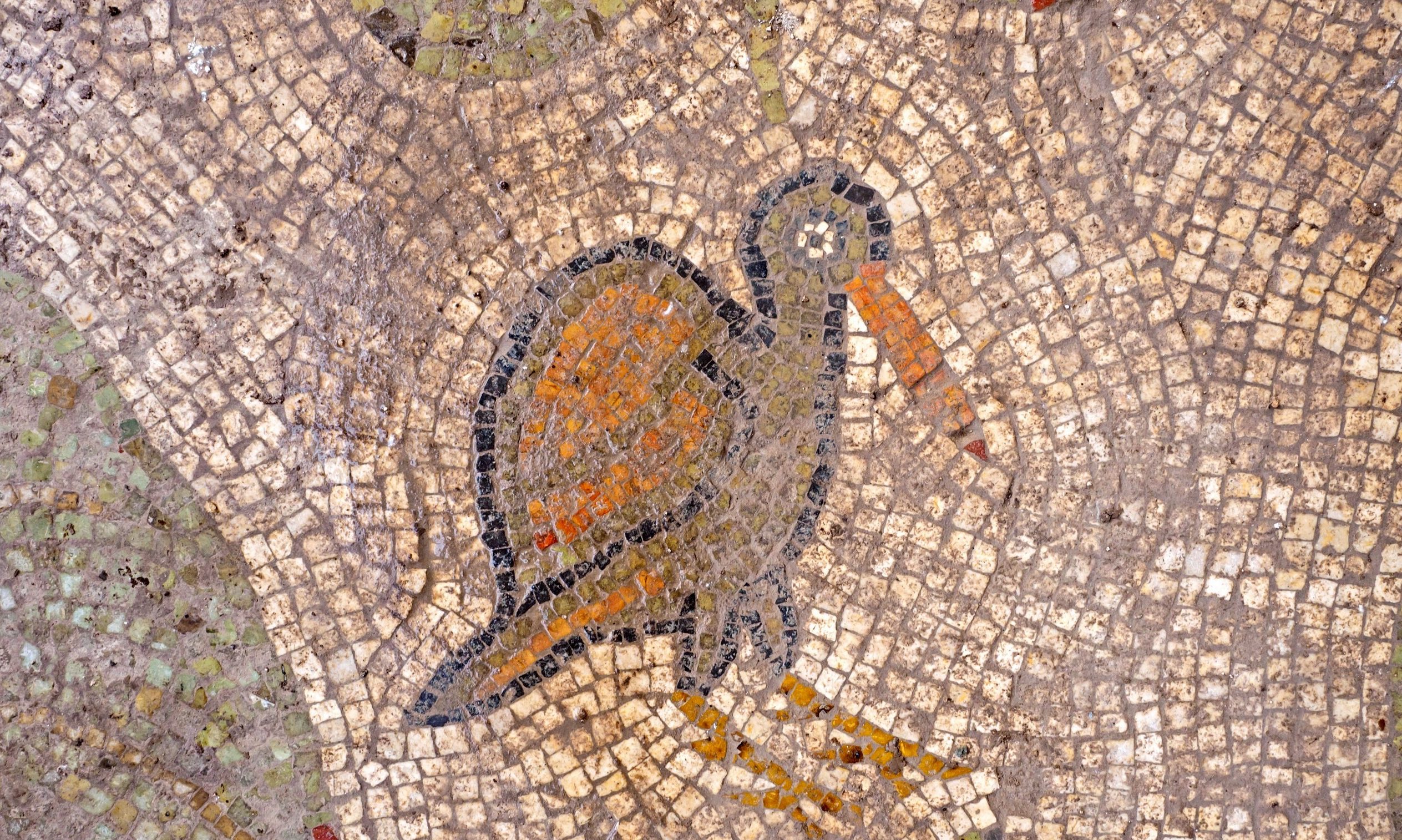
A rescue excavation pending the continued expansion of Bet Shemesh unearthed an early sixth century Byzantine monastic compound and church this past season, the largest of its kind discovered so far in the Judean foothills. Though a number of monasteries have been excavated in the region, Benjamin Storchan, Israel Antiquities Authority director of the excavation, points out that this one is outstandingly rich, varied, and well-preserved. Fine walls of hewn stone, a stone pillar base decorated with elaborate crosses carved in relief, stone window lattices and a superb mosaic floor featuring birds, leaves and pomegranates all point to a hefty investment in beautifying this place of worship. The fact that many of the raw materials were imported from Turkey further reinforces this impression.
Archaeologists assume that the basilica was one of the major pilgrim sites in the region, where according to biblical tradition David fought and overcame Goliath. The excavation which started last summer has involved thousands of youngsters from local schools and pre-army programs, deepening their connection to their history and land. Hadas Keich, a sixteen year-old from the Environmental High School in Sdeh Boker explained her involvement: “We were looking for a source of income to lower the cost of our school Holocaust-studies trip to Poland, and decided to work in an archaeological excavation. Gradually, as more and more fascinating artifacts came to light here, they made me feel more connected to my country and my history. It’s quite amazing to realize what’s hidden right under our feet.” The initiative for integrating youth in excavations to reduce the cost of their trip to Poland is a joint project of the Israel Antiquities Authority and the Education Ministry.
